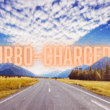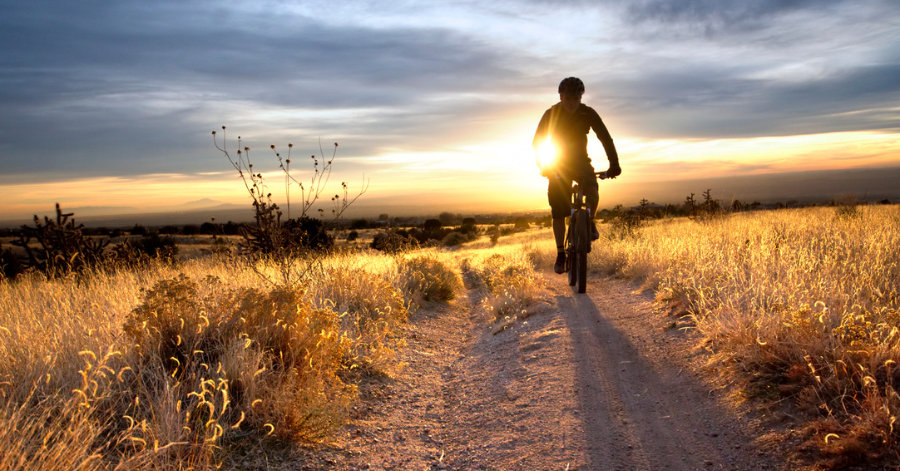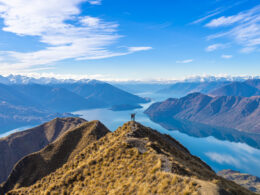Can we travel without contributing to climate change? The answer is yes, we can, but to arrive at solutions we have to rethink the relationship between speed, distance and time. In doing so we will rediscover the journey itself.
References
Shanti Mathias (2024). Is it possible to travel without damaging the climate? Yes. The Spinoff. https://thespinoff.co.nz/society/05-11-2024/is-it-possible-to-travel-without-damaging-the-climate-yes
Murray Goulden (2011). Hyper-Mobility or the End of the Road?
Ceasefire Magazine. https://ceasefiremagazine.co.uk/hyper-mobility/
Transcript
A couple of weeks ago I was interviewed by Shanti Mathias from the Spinoff. The general topic of discussion was whether or not it is possible to travel without damaging the climate. In her article Shanti reminds us that it is possible to travel widely without relying on planes and cars – and their high carbon dioxide emissions. Given the realities of climate change, and Australians’ and New Zealanders’ love of travelling, the key first step is to think about changing how we travel.
Popular forms of travel are very emissions-intensive and demand has increased enormously as prices have fallen in real terms over time. 32,000 international flights arrived and departed from Aotearoa last year and there are nearly three million cars registered in New Zealand, most of them petrol or diesel fuelled. A seven-day cruise trip is more than three times as carbon intensive as flying.
In my lifetime, aviation has become absolutely central to tourism, but it is possible for people to consciously choose to travel differently. The pandemic showed that New Zealanders can travel domestically for leisure where the joys of regional destinations to waiting to be discovered. If we choose to do so then more options with much lower carbon emissions begin to open up.
Trains are more efficient than cars or planes, even if they are powered by fossil fuels. Often we will travel by train when we are overseas – and most people rave about their train journeys. Train used to be an option in New Zealand, but gave way to the dominance of the private car. There are many practical, economic and social reasons to support trains, which are much easier to electrify that aeroplanes.
Other countries already have measures in place to make flying less attractive, like France’s ban on short haul flights that compete with high-speed rail. China’s ever expanding high-speed rail network carries hundreds of millions of passengers each year.
The expansion of New Zealand’s bike touring routes are great news for people who want to travel without producing carbon emissions. Cycle routes in Central Otago have been a massive boost to the region. While many people might fly to the start of the Otago Rail Trail or use a car shuttle on the Alps 2 Ocean route, there are options closer to home, too that combine bikes with public transport. From Wellington, it’s possible to get the train to Petone to start the Remutaka Cycle Trail – or go all the way to the Wairarapa and bike back over the Rail Trail via some very nice vineyards. Getting the bus or ferry to Diamond Harbour in Christchurch can be the start of a weekend cycle touring through Banks Peninsula.
And it is not just regional cycle trails that have proved such a popular option. Cities are also getting into low carbon cycle touring. Dunedin’s stunning harbourside cycle trail is now connected by a ferry from Port Chalmers to Portobello on the Otago peninsula which accommodates a spectacular circumnavigation of the harbour by bike and boat. Electric bikes have made cycling available to many people who otherwise wouldn’t consider cycle trails as an option.
Improving domestic low-carbon transportation infrastructure is low-hanging fruit. There are solutions we could advance today, if there is political will. If we don’t commit to these sorts of transitions we will be left behind in the eyes of tourists visiting here from countries that are more advanced in terms of low-carbon transport transitions. That is a very real risk.
The first key step in learning how to engage in low-carbon travel in a shift in mindset about how and why and where we travel. That means seeing travel by bike, bus, train and sail not as a missed opportunity to go further faster, but rather to see the journey as a highlight in its own right.
****
Shanti’s article led me to recall a fascinating article by Murray Goulden which was published in Ceasefire Magazine in 2011. In this article Goulden critiques our modern obsession with ever-faster travel. He argues that we might be getting around faster, but it is certainly not making us happier. Here is what he said, summarised, quoted and paraphrased from his article.
If there is anything you remember from high school physics it is probably the maxim speed = distance ÷ time. This equation provides an insight into travel and tourism that is indicative of one of the most dominant trends in contemporary life, namely the relentless pursuit of speed – and the simultaneous destruction of its co- variables – distance and time.
At the time that he was writing the future of Mag-Lev train technology was being lauded in the media. Mag Lev is short for magnetic levitation which is an advanced type of transport system in which a train travels on a magnetic track. To maximise the possibilities of low friction speed, the Mag-Lev train can travel through vacuum tunnels, supported on magnets, where hopes have been raised of extraordinary speeds – faster than the speed of sound, using only a quarter of the energy required by modern passenger jets.
This is perhaps the ultimate form of hyper mobility on Earth. Goulden writes that this sounds fantastical, but also asks if this is really desirable.
In recent decades our systems of hyper-mobility have destroyed distance. For those on middle incomes and above, almost any place on Earth is reachable in 24 or 32 hours for the cost of a few days wages. There are of course many positives to high mobility. Along with the opportunity to briefly escape our own lives, tourism offers us the chance of experiencing the lives of others. On a shrinking and increasingly interconnected planet, this can’t be a bad thing. Many argue that tourism is a force of cultural understanding and world peace – although it is easy to be cynical about such claims in a world characterised by increasing global tourism and increasing regional conflicts.
However the logic of increasing speed ensures that the act of travel – the journey itself –is itself evermore diminished. Distance is all but destroyed as places slip by 36,000ft below, or are smeared across the train window at 200mph. The proposed maglev vacuum train is surely the logical end-point of this process of relentless incremental acceleration. The ultimate destruction of the journey itself – hurtling through a black, airless void at faster than the speed of sound.
Of course, the quicker and easier it becomes to reach a destination, the more that destination begins to resemble the point where you started from. Inevitably, over time, the process of globalised tourism destroys the very thing it claims to be seeking. The adventurous have to push ever further off the beaten track, paving the way for the track to be paved into a road which will eventually become a highway.
Distant exotic and indigenous cultures become victims of mobility highways. People and landscapes are reduced to settings for Instagram reels. Local residents are displaced by short term rentals. Crowds arrive to be seen via social media online and then quickly move on, leaving behind residents who have to live with the impacts of hypermobility.
Studies in London have found strong correlations between heart disease in those who live close to airports caused by the noise pollution caused by aircraft taking off and landing. A study published in 2014 estimated that the air pollution from the engines of a single cruise ship while in port in Dubrovnik produced the equivalent of Euro 19,000 per day in respiratory health costs among local residents in port communities. Worldwide, over 1 million people a year die in car accidents, with 50 million injured.
And the environmental costs of hyper-mobility are devastating. The defining characteristic of 20th Century travel and tourism was the consumption of cheap oil – an unparalleled source of easily-accessible, concentrated energy – but this driver of hypermobility is incompatible with emissions mitigation, and no alternative fuels can possibly reinvent a sustainable version of the global transport system have today.
To resolve these issues in the absence of technology solutions we need to rebalance the speed, distance and time equation. Contemporary concerns ensure that techno-utopian dreams like that of the Mag-Lev vacuum train are sold to us as offering ever greater speeds at decreasing environmental cost. It’s claimed that the train will travel up to eight times faster than planes, at a quarter of the environmental cost.
The problem is that the easier travel is, the more people travel. New airports and new roads create new traffic, as society reconfigures itself around new travel possibilities. Of course good transport infrastructure provides an economic boost, and the other benefits that mobility brings, but the costs of hyper mobility are inescapable, and the world’s carrying capacity for the costs of travel and tourism are at breaking point.
This brings us back to Planck’s equation: speed = distance ÷ time. The vacuum Mag-Lev train promises to finally destroy distance and time. But we must start by asking what is the purpose of all this travel? Why travel so far and so fast, so frequently? You have to eventually ask, is there any intrinsic value in being able to physically move through space at such mindboggling speeds … in an airless black tunnel? The alternative to our speed fixation is to reassert balance to the equation, by restoring the attention that we pay to time and distance.
Rebalancing the equation requires us to rethink the journey itself. The pleasure of the journey has been lost in airport security queues, the travel stresses of budget airlines, exhaust fumes produced by traffic jams, and in the blur of speed itself.
The systems of hyper mobility that offer the possibility of escape at ever greater speeds is perhaps the same system that will eventually destroys the possibility of escape, as the places we leave and the places we visit become more and more the same. If distance and time are allowed back into the picture, less (speed) can indeed be more. Those faraway places we value so highly might take longer to get to, but as you journey there, and when you get there, you will actually be there.








